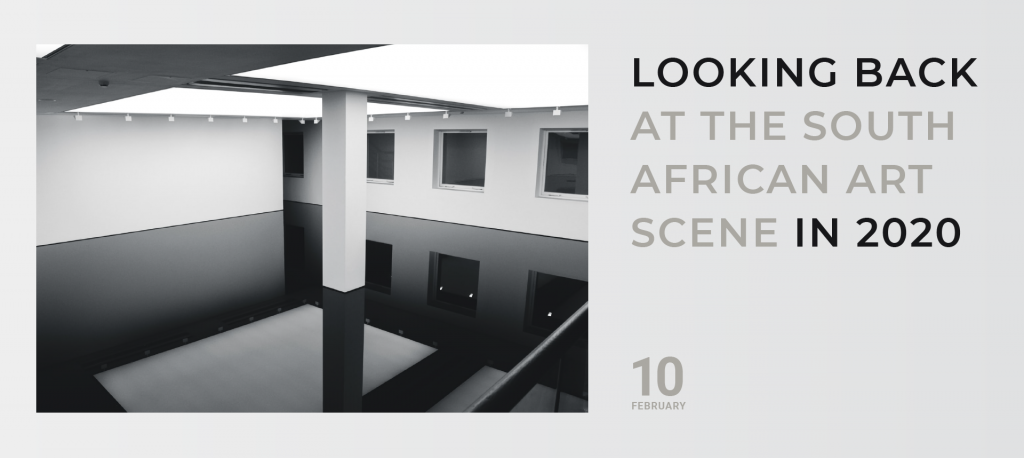

How has the pandemic of 2020 impacted the South African art scene? We find ourselves in unchartered territory due to the world’s sudden migration towards a purely online interaction, albeit involuntary, which has had a profound effect on local art industries. South Africa has been no exception to a radical change in our habits and traditions around art; how we experience art, how we communicate about art, how we exhibit artworks etc. After an already extended period of change and the foreseeable continuation of this current situation, one has to consider the possible long-term effects on the South African art scene – many of which have been surprisingly positive. Namely, there appears to be new relationships emerging directly between artists and collectors, who previously did not have as much access to each other. In addition, we have seen a much better digitalisation – and with that, documentation – of the art world which is allowing this previously elitist industry to become more accessible.
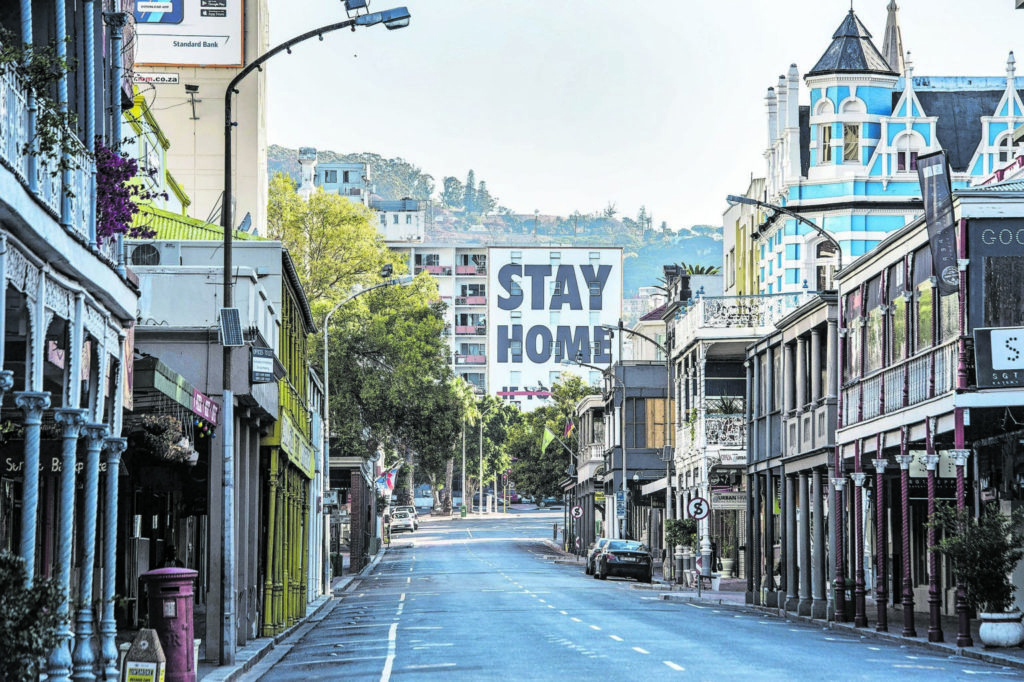

A SHIFTING RELATIONSHIP BETWEEN COLLECTORS AND ARTISTS:
The year 2020 was a first for many industries, including the South African art scene. Entire structures and traditions of how we see and experience art were forced to shift. Even more revolutionary perhaps was our exposure to aspiring contemporary artists through platforms such as Instagram – combined with global lockdowns and an overall worldwide movement towards working and connecting online. Within the context of the South African art market, this phenomenon accelerated a shift between artists and collectors, who were previously connecting predominantly through third parties such as art galleries, dealers and critics. This online platform has allowed aspiring artists to potentially launch their careers through access to a wide audience of collectors.


From the point of view of an emerging or curious art collector, Instagram provides accessibility into the art world, previously shrouded in unfriendly elitism. Ben Walmsley (Associate Professor in Audience Engagement, School of Performance and Cultural Industries, University of Leeds) explains that “ultimately this kind of digital platform has the potential to encourage a deeper, richer, more relational and democratic engagement between audiences, artists and arts organizations.” Instagram has an estimated 1.1 billion global users. In South Africa, there were 5.26 million users as of November 2020, up from 4.89 million in July 2020.
Local South African art galleries saw an increase in engagement and interaction from collectors on Instagram from March 2020. 99 Loop Gallery explains that “it felt as if 2020 was the year that everyone’s eyes were on digital art platforms and social media – this exposure allowed the gallery to reach international audiences and create connections in ways we hadn’t before.” Similarly, Stevenson stated that “for the past 2 or so years the gallery has noticed the growing impact and significance of Instagram as a platform for visibility and communicating with our international audiences. This grew significantly in 2020 – our Instagram feed became the beat to which our digital presence finds its rhythm. We needed to adapt to a world where exhibitions were now limited to behind screens, and so Instagram became an exciting platform for innovation and some experimental modes of digital exhibition-making.”
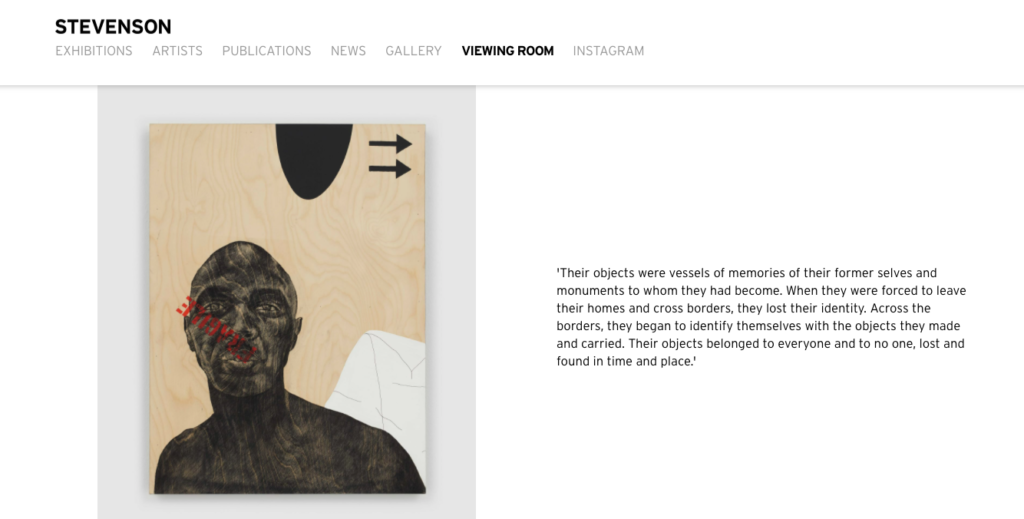

AN INCREASE IN VIEWING AND PURCHASING ART ONLINE:
Within a matter of weeks, many aspects of the art world were obliged to shift: namely the virtual documentation around art. Online viewing rooms were created in order for collectors to still experience art and to still enjoy exposure to new artists. We have seen a rapid increase in online art sales worldwide. The Hiscox Online Art Trade Report of 2020 examines how the top global auction houses responded to the pandemic. The report states that Sotheby’s “has seen a 131% increase in the number of lots sold online [during 2020], and a 74% increase in average prices compared to 2019. The total sales generated by Christie’s, Sotheby’s and Phillips during online-only auctions during the first half of 2020, was $370 million. That is five times more than in the same period in 2019.”
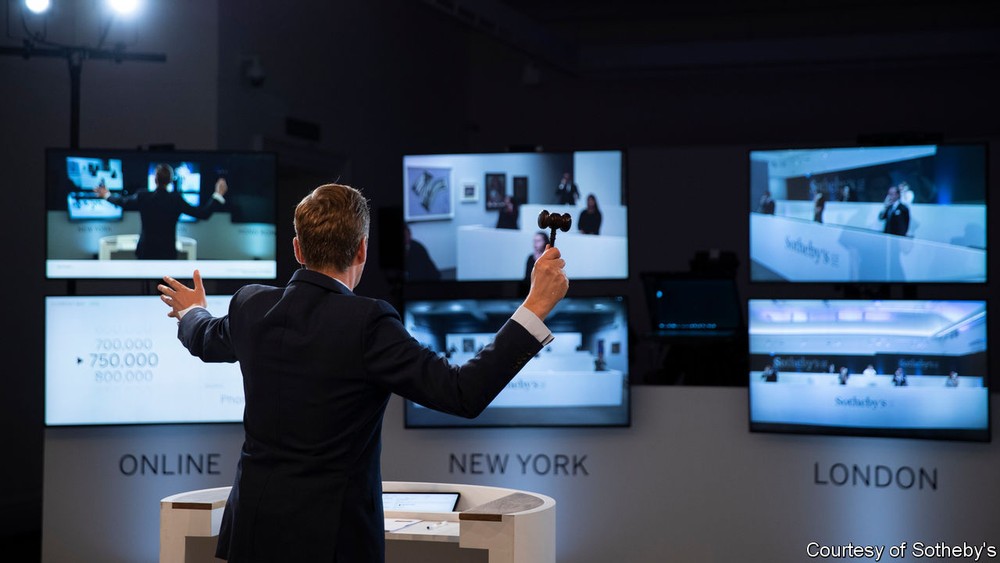

Essentially, we witnessed that all pre-existing channels for selling art were immediately dried up with all the enforced global lockdowns – leaving one exception, that of an online channel. Kirsty Colledge, Senior Art Specialist and Head of Department at Strauss & Co. discusses the auction house’s online-only auction, which took place during lockdown in South Africa (26 March – 1 May 2020), explaining that it was “our most successful online auction yet. Robust bidding for the 695 lots saw a total R6.2 million from 515 lots sold. Over 74 % lot sell-through rate and the most number of lots sold in a single auction at Strauss & Co ever.”
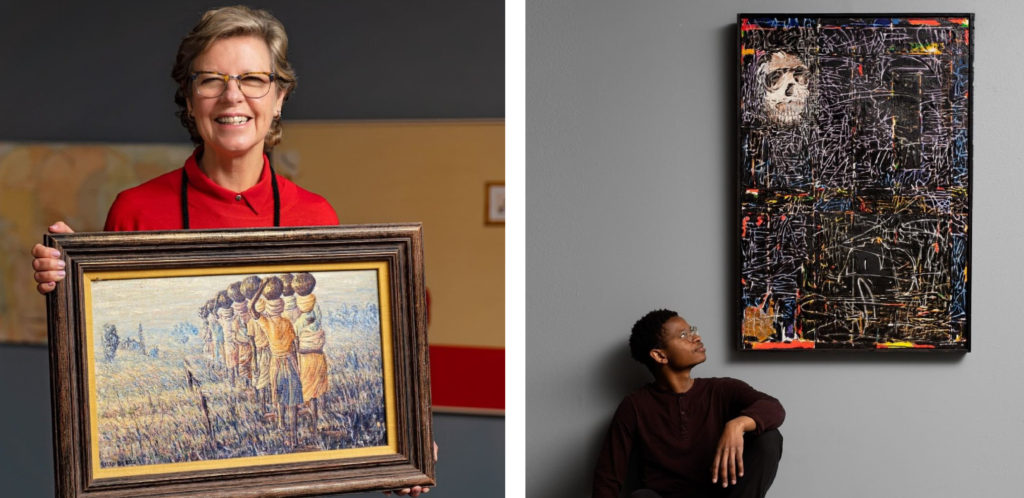

In 2020, South Africa also saw the emergence of online art destinations – platforms that curate, sell and exhibit art online. Latitudes, an accessible marketplace for contemporary African art, launched their opening with a physical fair in September 2019 on the Nelson Mandela Square in Sandton, Johannesburg. The next Latitudes Art Fair will take place in September 2021 at the Sandton City Rooftop in Johannesburg. Before the start of the pandemic, Latitudes intended to create an online platform in the future. 2020 fast-tracked that dream, and in July 2020 Latitude.online was introduced.


Latidudes.online is a digital platform on which one can explore and buy contemporary African art. The curated marketplace started off with 350 artists and 120 sellers from over 20 different countries in July last year. By December 2020, Latitudes.online represented close to 600 artists and over 160 sellers. The Latitudes.online site has been viewed in 123 countries; and artworks are being shipped to far-away destinations including the US, New Zealand, Italy, Reunion, the UK, Morocco, and more.
During lockdown last year, Goodman Gallery owner Liza Essers saw an opportunity and the demand for an online platform that showcases art to the world – specifically art from the Global South. In conversation with The Art Newspaper in November of 2020, Essers said that she decided to create “an aggregator for galleries devoted to artists with diverse perspectives,” with an archive that will “form a central repository for texts and content providing an alternative art history.”’ And so South South was born – a gallery-led initiative representing galleries from the Global South on a single curated online platform.
THE SHIFTING ROLE OF ART GALLERIES:
Technology around viewing and experiencing art online has had to develop drastically within a short period of time in order to meet new norms within a pandemic-induced art world. Stevenson comments that “like it or not, we are in the time of the OVR (Online Viewing Room) so we [have been] working on creating more interactive sites for gallery shows – this being especially important in times of lockdown where the only possibility to see the work [is] virtual. Trying to find software that is versatile enough to adapt to the multitude of needs for presenting artworks and the ongoing experimentation we are doing is not easy, but we hope to get there eventually.”
The Hiscox Online Art Trade Report of 2020 says that some of the big global art galleries “have taken the concept of online gallery platforms to another level, by offering smaller galleries and art fairs the opportunity to exhibit and sell utilising their technology platforms, and basically turning these major galleries into third-party online sales platforms.” It is possible that many of the small to mid-sized art galleries will not be able to compete in this new digital era with the more sophisticated viewing softwares of larger galleries – the latter with more resources to pour into developing their online technology. Hiscox further quotes that “a large majority (67%) of platforms think the online art market will be dominated by a few global players within the next five years.”
Many galleries are using the services of Artlogic who assist with setting up viewing rooms for their exhibitions for an affordable monthly fee. Artlogic Databases managed 4.8 million artworks in 2020, and 54.9 million emails were sent using Artlogic’s mailing campaign tools in 2020.
Goodman Gallery introduced a new online viewing room portal. The portal is accessible on their website and provides online access to all their upcoming and past exhibitions. In addition, there is a so-called Reading Room that provides a link to supplementary information. Bi-monthly, this online platform showcases new exhibitions, including a range of audio and video clips from the participating artists and curators.


THE EMERGENCE OF A NEW ART COLLECTING MARKET
The year 2020 has shown the emergence of a new market of art collectors with the new online art market attracting younger and more tech-savvy art enthusiasts – who had, in the past, perhaps been put off from entering the art world due to its elitism and inaccessibility. Strauss & Co. comments that “from our first online auction in November 2013 to our online April auction [2020] we have seen an 800% increase in the number of buyers aged 20-29.”
Interestingly, we have seen a growing market for new and younger art collectors who feel more comfortable browsing and exploring the art world online from their homes. The Hiscox Online Art Trade Report confirms that “a majority of millennial art buyers (54%) and new art buyers (60%) said their interest and confidence in buying art online had increased as the art world switched to virtual sales in the COVID-19 global lockdown.”
BETTER DOCUMENTATION AND TRANSPARENCY ON PRICING WITHIN CONTEMPORARY ART SCENES:
Previously, much of the activity taking place within the art world was done without concrete documentation – artists would often speak publically in galleries, at art fairs and at vernissages without this being properly recorded. The same applied to a multitude of curators and specialists who would give lectures and academic feedback without it being documented. Printed catalogs were often lost or poorly archived after events ended. One clear benefit of having seen the art world migrate entirely online is that the recording of what is happening in the art industry has increased dramatically. This is particularly good news from an art historical point of view as in time, we will be able to look back and see the clearer emergence of artistic movements and trends.
In addition, we are seeing for the first time that price lists around artworks in the primary market are being published openly online, which marks a revolutionary shift away from previous murkiness concerning commercial values around art. This has contributed to an overall opening up and new accessibility of the art industry to the outside world – which has been one of the most positive changes affecting the South African art scene to come out of 2020.

